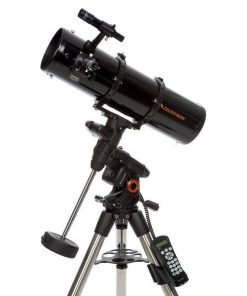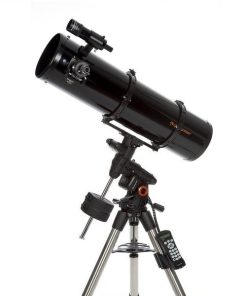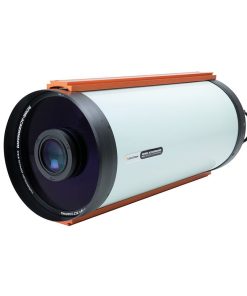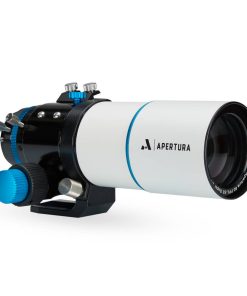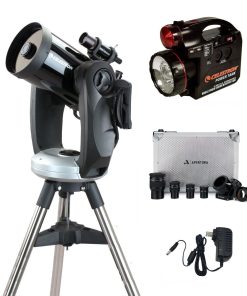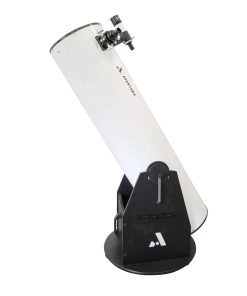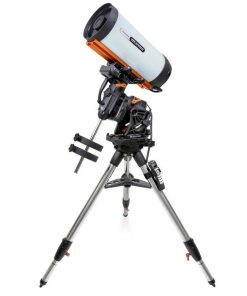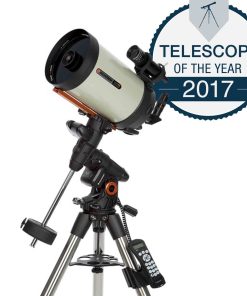Celestron Omni XLT 150 Reflector Telescope – 31057 Celestron
$ 579,95 $ 173,99
Omni XLT series features the stable platform of the CG-4 mount and high quality optics. Using aspheric shaping technology in conjunction with hand-figuring the optics, the Omni XLT presents an image with virtually no spherical aberration. We also added our famous StarBright XLT coating system to further enhance light transmission.
Features include:
- High quality optics start with each lens and (or) mirror being hand selected so only the finest grade of optical glass is used
- StarBright XLT coatings provide maximized light transmission
- 25mm multi-coated eyepiece – 20mm eye relief, 50-degree FOV
- CG-4 German equatorial mount with setting circles and slow motion controls – to accurately locate and track sky objects
- Ball bearings in both axis of the mount for smooth performance
- Heavy-duty pre-assembled stainless steel tripod featuring 1.75″ legs, accessory tray and bubble level
- Easy no-tool setup
- The Sky Level 1 planetarium software with 10,000 object database and enhanced images
About Celestron Reflector Telescopes
A Newtonian reflector uses a single concave mirror as its primary. Light enters the tube traveling to the mirror at the back end. Light is then “bent” forward in the tube to a single point, its focal plane. A flat mirror called a “diagonal” intercepts the light and points it out the side of the tube at right angles to the tube through the eyepiece. The eyepiece is placed there for easy viewing. Newtonian Reflector telescopes replace heavy lenses with mirrors to collect and focus the light, providing much more light gathering power for the money.
You can have focal lengths up to 1000 mm and still enjoy a telescope that is relatively compact and portable. Newtonian Reflector telescopes do require more care and maintenance because the primary mirror is exposed to air and dust. However, this small drawback does not hamper this type of telescope’s popularity with those who want an economical telescope that can still resolve faint, distant objects. Newtonian reflectors produce a “right-side-up image” but the image will appear rotated based on the location of the eyepiece holder in relation to the ground. Newtonian reflectors are best for astronomical use where right-side-up does not matter.
Newtonian Advantages
- Lowest cost per inch of aperture compared to Refractors and Catadioptrics since mirrors can be produced at less cost than lenses in medium to large apertures
- Reasonably compact and portable up to focal lengths of 1000 mm
- Excellent for faint deep sky objects such as remote galaxies, nebulae and star clusters due to the generally fast focal ratios (f/4 to f/8)
- Adequate for lunar and planetary work
- Good for deep sky astrophotography (but not as convenient and more difficult to use than Catadioptrics)
- Free of color aberration due to the use of a primary mirror
Newtonian Disadvantages
- Generally not suited for terrestrial applications
- Slight light loss due to secondary (diagonal) obstruction when compared with Refractors
Quick Shipping and Professional Packaging
Due to our longstanding partnership with UPS FedEx DHL as well as other major international carriers, we are able to provide various shipping options. Our warehouse personnel are well trained and will be able to pack your goods in accordance with the exact and precise specifications. Your goods are thoroughly checked and securely secured prior to shipment. Everyday we deliver hundreds of packages to our customers from all over the world. Our determination to be the biggest online retailer in the world is shown by this. The warehouses are located situated in Europe in the same way as they are in the USA.
Note: Orders containing multiple items will have a separate processing period for each item.
We will carefully examine all products before they are shipped. Today, the majority of orders will be delivered within 48 hours. The delivery time will be between 3-7 working days.
Returns
We don't manage the stock at our warehouse and factory. The actual inventory may fluctuate at any time. It's possible that you may not receive your order once it's been placed.
Our policy is for 30 days. We are unable to return or exchange your purchase after 30 days since the purchase.
In order for your item to be eligible for return the item must not be opened and in the condition you received it. It must also remain in the original packaging.
Related products
Telescopes
Apertura 60 mm f/6 FPL-53 Doublet Refractor with Field Flattener Kit – 60EDR-KIT Apertura
Telescopes
Celestron 8″ Rowe-Ackermann Schmidt Astrograph with CGX Equatorial Mount – 12058 Celestron











